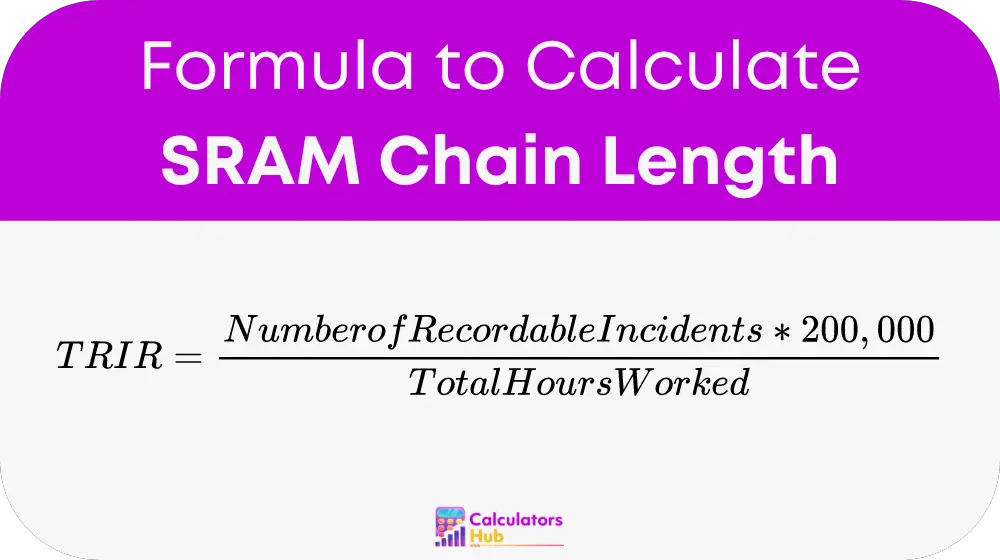TRIR is a critical measure in safety management, serving as a benchmark for OSHA compliance and safety monitoring. It provides a standardized method to evaluate and compare safety performance across different time periods or between companies in similar industries.
Formula of TRIR Calculator OSHA
The TRIR calculation is straightforward but vital for understanding workplace safety dynamics. It is calculated as follows:

- Number of Recordable Incidents: This includes all incidents that OSHA mandates to be recorde, such as any work-related injury or illness requiring more than first aid.
- 200,000: Represents the equivalent of 100 employees working full time in a year.
- Total Hours Worked: The total hours all employees have worked during the year.
Table of General Terms
| Term | Definition | Example |
|---|---|---|
| Recordable Incidents | Incidents that must be reported to OSHA | Injuries requiring medical treatment beyond first aid |
| Total Hours Worked | Cumulative hours worked by all employees in a year | 500,000 hours |
This table helps in understanding how each component affects the TRIR calculation.
Example of TRIR Calculator OSHA
Consider a manufacturing company with 5 recordable incidents in a year, and a total of 650,000 hours worked. Using the TRIR formula:
TRIR = (5 * 200,000) / 650,000 ≈ 1.54
This indicates that there were approximately 1.54 recordable incidents per 100 full-time employees.
Most Common FAQs
Recordable incidents include any work-related injury or illness that requires medical treatment beyond first aid, as defined by OSHA.
Businesses can reduce their TRIR by implementing rigorous safety programs, conducting regular training, and engaging in continuous monitoring of safety practices.
It is advisable to calculate TRIR annually to track safety performance and make necessary improvements.